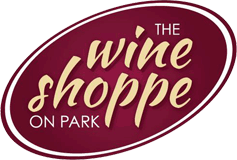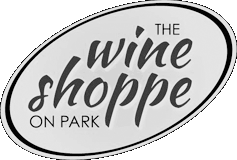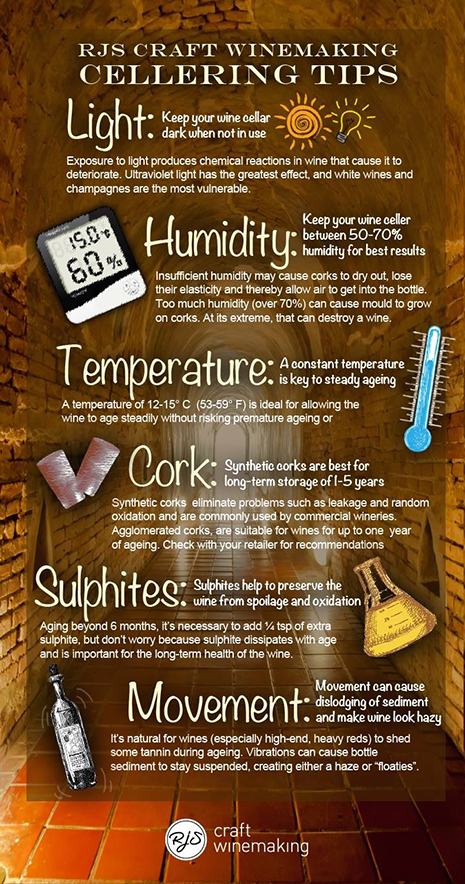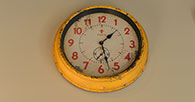Frequently Asked Questions
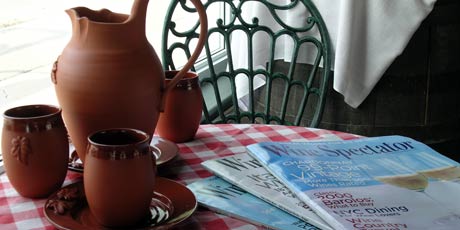
A. Every wine ages differently, and everyone's taste is slightly different too. In general, reds need longer to develop body and complexity, as they tend to be thin (watery) when young. Whites tend to be well received when younger, but have a crisp edge that mellows with time. As well, white wines develop aroma and smoothness with age, and reds gain complexity and fullness. Please keep in mind that everyone's taste is different, so this list is a guide only. Your palate is the best judge!
The list below contains our recommended aging ranges:
- House Wines & Heritage Estates: 2 weeks to 2 months
- Portrait Series: 2 - 6 months
- Cru International & Cru International Premium: 2 - 8 months
- Shoppe Exclusives 2 - 8 months (Baco Noir, Trilogy Red & White)
- Cru Select: 3 - 8 months
- En Primeur & Winery Series & RQ: 4 - 12 months
- Fruit wines need no aging at all! They do have a 1 year shelf life, but with age, these beverages often mellow and lose their fresh fruity taste. Enjoy young :)
The first number indicates when the wine is first becoming smoother and more palatable. The end time is not the shelf life, but rather the end of the most noticable aging curve. All the wines will age more slowly after their range, and keep for about a year (see below).
A. Since we use minimal sulphites (preservatives), the shelf life of most of our white wines is about 1 year from bottling time, up to 2 years for reds. Red wines have natural preservatives from the grape skins (tannins) that allow them to last about 6-12 months longer than white wines at the same level. For these reasons, we include a 1-2 year cork with every batch. If you wish to keep your wine longer than a year, we recommend upgrading to our premium Synthetic cork to allow your wine to last up to 5 years.
A. We recommend a room that maintains a constant temperature all year round and isn't too humid. Damp storage conditions can cause the corks to mould and your wine to go off before its time. Cooler storage areas allow the wine to age more gracefully and slowly, while warmer temperatures are conducive to faster aging. Storing wine in a place with constant and dramatic temperature fluctuations will harm the aging process and may cause your wine to go off. Direct sunlight or constant artificial light can also be detrimental, so store your wine away from direct sunlight and in a room where artificial light will be kept to a minimum.
A. Leave your wine stading upright in the boxes for 4 to 7 days. This will allow the residual bubbles from bottling to escape through the crevices and cracks in the dry cork and to allow the pressurized air pocket between the wine and the cork to be alleviated. Once at least 4 days has passed, it is best to store your wine on its side, in a rack or in boxes tipped on their sides. This allows the wine to moisten the dry cork, causing it to expand and form a good seal for aging. It is not necessary to store the wine upside down.
A. Yes we do! We offer bottles in various colours and sizes and since we keep bottles instock at all times, so there is no need to pre-order them.
Our 750mL bottles are available in green or clear, as are our 375mL bottles. All of these options cost $1 each plus HST.
We also offer 1.5L green bottles for $2.25 each plus HST.
A. Since all of our batches include labels, it is best to remove them before returning to bottle your wine. If they were labels you applied using our label moistener, simply soak the bottles in hot water for 1 minute and they float right off. If they were the peel and stick variety, simply peel them off again, without using water (if you are having trouble, try filling the bottle with warm water to warm up the glass). That's it!
If the bottles you have came from the LCBO, the labels can be quite tricky. Try soaking overnight in luke warm water with a touch of bleach, followed by scraping off what you can. If there is any leftover sticky glue, try using a product called GooGone, which can be purchased at any hardware store.
A. We guarantee that your wine won't have any sediment, so please call the store right away. Sediment has the appearance of light, fluffy powder. If you have a wine with small, hard crystals (resembling salt, sugar or sand), you have a wine with wine "diamonds". This ocurrs in our higher level wines, due to a higher level of tartaric acid. Once aged, this acid slowly forms diamond-shaped crystals in wine. They are completely harmless, but a nuissance in your glass. Simply decant your wine slowly, leaving the crystals behind, and then pour the last few ounces through a coffee filter. We do add an ingredient called metatartaric acid to help prevent the formation of crystals in our wines, but sometimes they still do occur in our high-end varietals.
Please click here for more Frequently Asked Questions and their Answers
If you have a question not addressed above, please feel free to contact us!
Store Hours
Regular Hours
Monday:
Closed
Tuesday:
9:30 am - 6:00 pm
Wednesday:
9:30 am - 7:00 pm
Thursday:
9:30 am - 6:00 pm
Friday:
9:30 am - 5:00 pm
Saturday:
9:30 am - 3:00 pm
Sunday:
Closed



